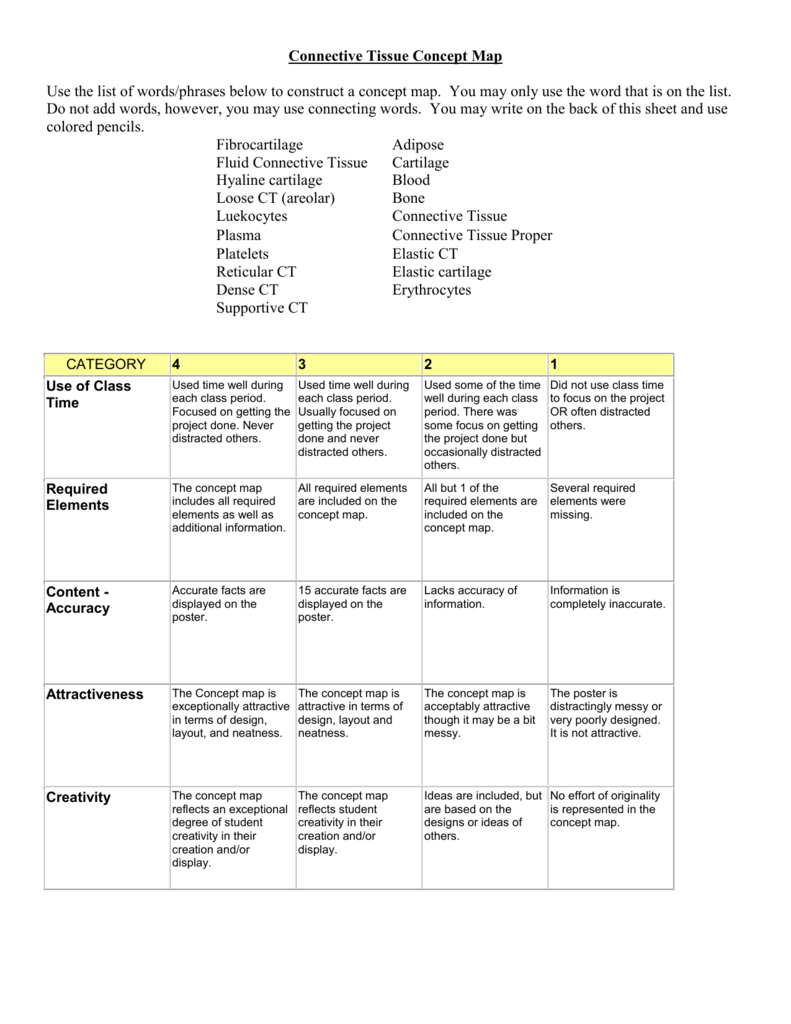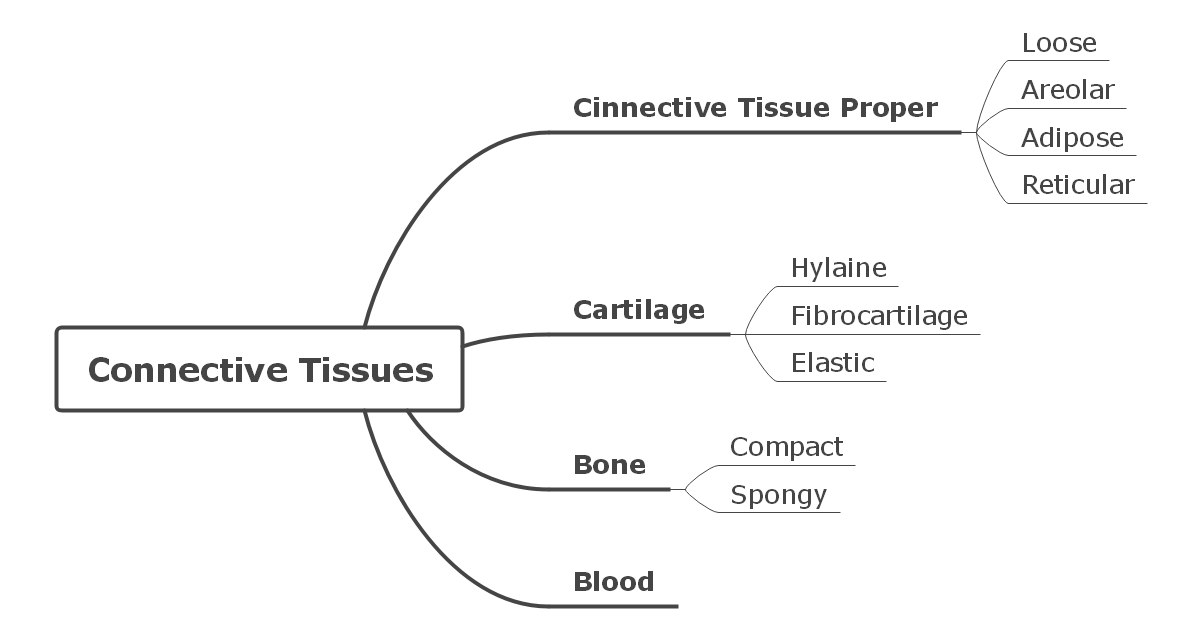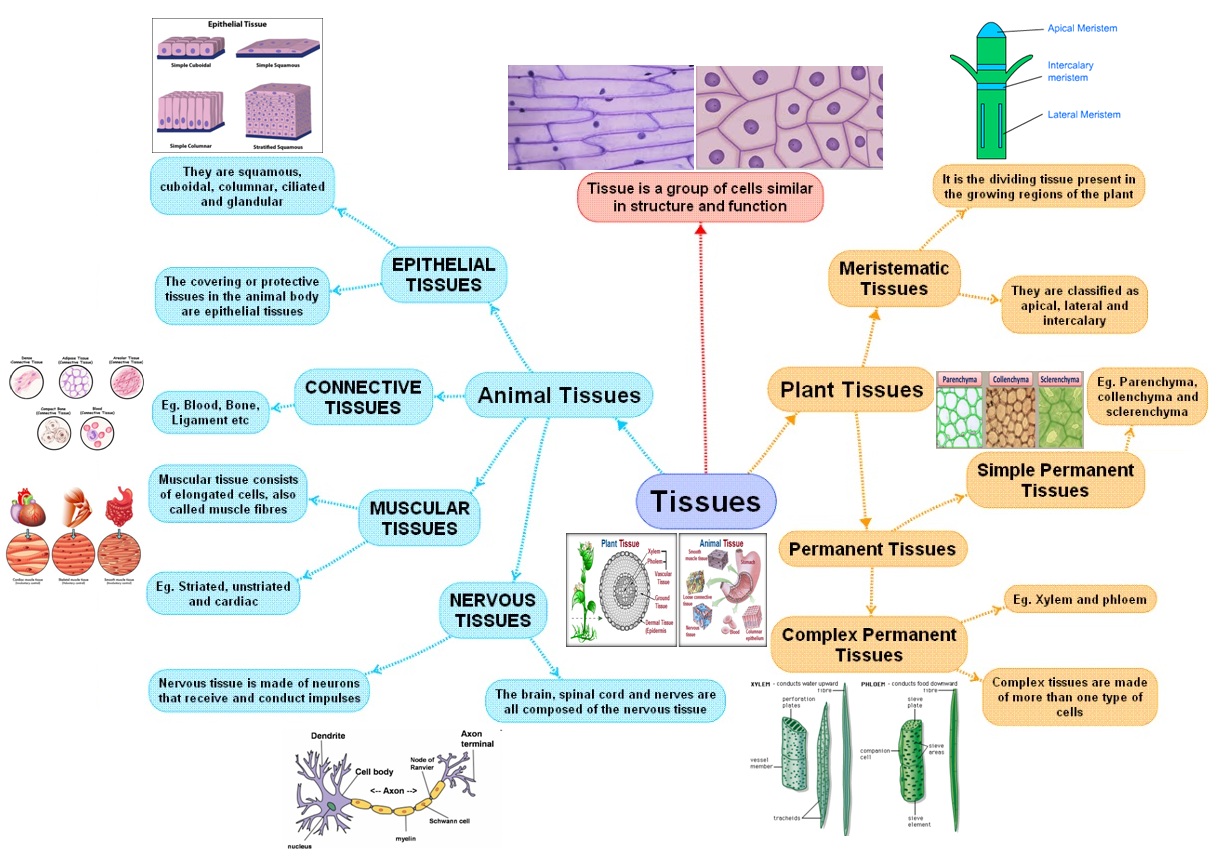Connective Tissue Concept Map World Of Light Map
Connective tissues in the body region have a mesoderm origin, while in the head region neural crest also contributes to these tissues. This topic is also covered in musculoskeletal ( Tendon Development ), integumentary ( Integumentary Development) and endocrine development ( Adipose Tissue ). Blood is a liquid connective tissue (More? Blood.

Connective Tissue Concept Map
18 terms hannah7_m Preview Mastering A&P CH 5 Integumentary System 45 terms D91607_J62112 Preview Terms in this set (14) Connective Tissue - Found everywhere in the body - Includes the most abundant and widely distributed tissues - Functions: - Binds body tissues together - Supports the body - Provides protection Ground Substance

Connective Tissue Concept Map World Of Light Map
Plant tissue concept map helps students to thoroughly learn about different types of tissues in plants. This concept map makes learning more interactive. Moreover, concept mapping assists students in visualizing the relationships between various concepts and helps in understanding complex subjects. Plant tissue concept map is helpful for.
08. Resident Connective tissue
Connective Tissue by Paige Salwei 1. Bone: hard, calcified matrix containing many collagen fivers with blood vessels; supports & protects, provides levers for muscles, stores calcium & other minerals 1.1. Compact 1.2. Spongy 2. Blood: red & white blood cells in a fluid matrix; transport respiratory gases/nutrients/ wastes; found in blood.

Connective Tissue Concept Map
Concept Map: Connective Tissues Complete the Part A Concept Map to describe the types of connective tissue found in the body Drag the appropriate labels to their respective targets. Click the card to flip 👆 Click the card to flip 👆 1 / 74 Flashcards Learn Test Match Q-Chat mstackss69 Top creator on Quizlet Students also viewed

Connective Tissue Concept Map Map Vector
Connective tissue is one of this basics tissue types of the frame. More its name implies, "connective tissue" is a notion given to several body pattern that connect, support, and get bind different tissues. While the assorted connectivity tissues of the body are diverse, they stock numerous structur both functional features which explain why they become subsumed at a only tissue category.

Connective Tissue Types Tissue types, Physiology, Human anatomy and
The distribution of connective tissue throughout the body varies depending on the organ. A connective tissue concept map is used to know how connective tissue operates. The design of the connective tissue concept map gives more information by representing every branch through different colors, which makes it easy to understand.

Samples of Tissue Maps created by students
41.3.1: Animal Tissues. The development of a fertilized egg into a newborn child requires an average of 41 rounds of mitosis ( 241 = 2.2 ×1012 2 41 = 2.2 × 10 12 ). During this period, the cells produced by mitosis enter different pathways of differentiation; some becoming blood cells, some muscle cells, and so on.

Connective Tissue Concept Map Diagram Quizlet
1. cells fit tightly together and neighboring cells are bound together at many points by specialized cell junctions (desmosomes & tight junctions) 2. one free unattached surface or edge (apical surface) 3. lower surface rests on a basement membrane (secreted by the epithelial cells and the connective tissue cells abut the epithelium)

Solved Using no more than 14 propositions, create a concept
Tissues Concept Map 353 1 Learn about Prezi Fri Oct 21 2016 Outline 42 frames Reader view Connective Tissue Epithelial Cells that cover the body surfaces or lines a body cavity. The connective tissue functions to support the body (skeletal) and bind all types of tissues together.

Solved Part A Complete the Part A Concept Map to describe
Samples of Tissue Maps created by students These are sample concept maps created by anatomy students studying the four types of tissues. Instructions required them to include at least two bits of information about each tissue type. In the samples below, the four main tissue types are respresented: epithelial, connective, nervous, and muscle.

Connective Tissue Tissue Biology, Cell Biology, Adipose Tissue, School
1. Start with your center concept - TISSUES OF THE BODY 2. Draw 4 arrows connecting to the four types of tissues found in the body. 3. From each tissue type, draw arrows (varies in number) to related types 4. For each you want to include linked concepts that describe the tissue type, indicate where it is located, and any additional related terms

Connective Tissue Concept Map
Save Save ANIMAL TISSUE CONCEPT MAP For Later. 0 ratings 0% found this document useful (0 votes) 1K views 1 page. Animal Tissue Concept Map. Uploaded by Beyonce C. SIBAL. AI-enhanced title.. Connective Tissue Graphic Organizer- NO COLOR. Tori Lane. 180121. 180121. Diwan. ConceptMap. ConceptMap. Jalen Galvez.

LearnQuix
Connective Tissue Concept Map Use the list of words/phrases below to construct a concept map. You may only use the word that is on the list. Do not add words, however, you may use connecting words. You may write on the back of this sheet and use colored pencils. Fibrocartilage Adipose Fluid Connective Tissue Cartilage Hyaline cartilage Blood.

Connective tissue. It's all over the place, really... Body tissues
Term. 2 types: Dense regular collagenous CT: -In tendons and ligaments, covers skeletal muscles. -very tough made of mostly straight parallel collagen fibers, not very many cells. -Provides firm attachment, conducts pull of muscle, reduces friction. Dense regular elastic CT: -Between vertebrae and in vocal cords.

Connective Tissue Concept Map Map Vector
Connective tissue is the tissue that connects or separates, and supports all the other types of tissues in the body. Like all tissue types, it consists of cells surrounded by a compartment of fluid called the extracellular matrix (ECM). However connective tissue differs from other types in that its cells are loosely, rather than tightly, packed.